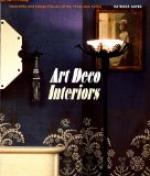Avoid the desecration of the few good antiques you own, by the use of a too modern colour scheme. Have the necessary modern pieces you have bought to supplement your treasures, stained or painted a dull dark colour in harmony with the antiques, and then use dull colours in the floor coverings, curtains and cushions. If you have no good old ornaments, try to get a few good shapes and colours in inexpensive reproductions of the period to which your antiques belong. Avoid the mistake of forgetting that every room is a “stage setting,” and must be a becoming and harmonious background for its occupants.
Avoid arranging a Louis XVI bedroom, with fragile antiques and delicate tones, for your husband of athletic proportions and elemental tastes. He will not only feel, but look out of place. If he happens to be fond of artistic things, give him these in durable shades and shapes.
Avoid the omission of a thoroughly masculine sitting-room, library, smoking-room or billiard-room for the man, or men, of the house.
Avoid the use of white linen when eating out of doors. Saxe-blue, red or taupe linen are restful to the eyes. In fact, after one has used coloured linen, white seems glaring and unsympathetic even indoors, and one instinctively chooses the old deep-cream laces. Granting this to be a bit precieuse, we must admit that the traditional white damask, under crystal and silver, or gold plate with rare porcelains, has its place and its distinction in certain houses, and with certain people.
PLATE XXX
Shows a man’s
library, masculine gender written all over
it-strength, comfort,
usefulness and simplicity.
The mantel is arranged
in accordance with rules already stated.
It will be noticed that
the ornaments on mantel in a way
interfere with design
of the large architectural picture.
[Illustration: A Man’s Library]
Avoid in a studio, bungalow or a small flat, where the living-room and dining-room are the same, all evidences of dining-room (china, silver and glass for use). Let the table be covered with a piece of old or modern brocade when not set for use. A lamp and books further emphasises the note of living-room.
Avoid the use of light-absorbing colours in wall papers if you are anxious to create sympathetic cheerfulness in your rooms, and an appearance of winning comfort. Almost all dark colours are light-absorbing; greens, dull reds, dark greys and mahogany browns will make a room dull in character no matter how much sunlight comes in, or how many electric lights you use. Perhaps the only dark colour which is not light-absorbing is a dark yellow.
Avoid the permanent tea-table. We are glad to record that one seldom happens upon one, these days. How the English used to revile them! In the simplest homes it is always possible at the tea hour, to have a table placed before whoever is to “pour” and a tray on which are cups, tea, cream, sugar, lemon, toast, cake or what you will, brought in from the pantry or kitchen. There was a time when in America, one shuddered at the possibility of dusty cups and those countless faults of a seldom-rehearsed tea-table!




